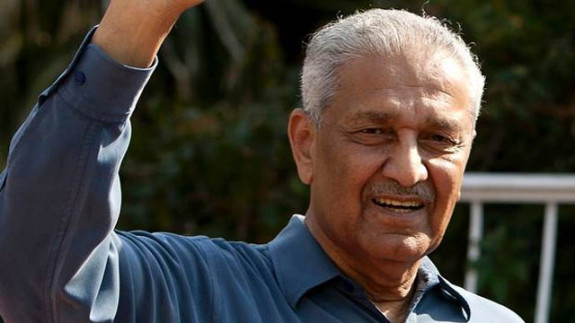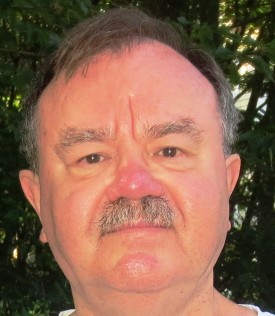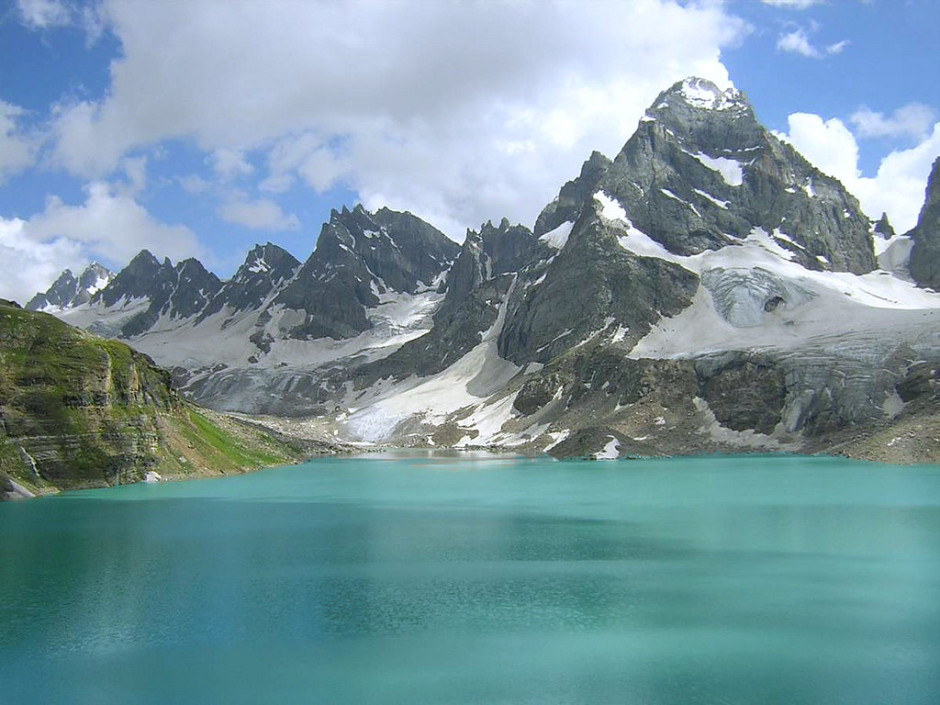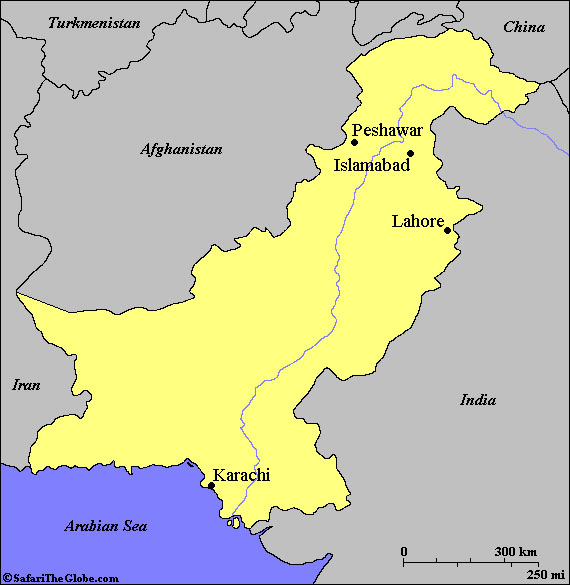Pakistan has been called “the most dangerous place in the world” by Pakistani journalist Imtiaz Gul, the executive director of the Islamabad-based Centre for Research and Security Studies.
Throughout its history, this country of 180 million people — the second largest Muslim state in the world — has been subject to periodic military coups, often the result of mismanagement by corrupt civilian politicians.
It was an artificial state right from the start, the product of the territorial partition, based on religious criteria, of the Indian subcontinent, with Muslim majority areas in the west and east forming the new country, and the rest, mainly Hindu and Sikh, remaining in India. Both countries achieved independence in mid-August of 1947.
The Hindu ruler of the disputed princely state of Kashmir, though majority Muslim, joined India, resulting in a war that divided it between the two new countries; it has been a source of conflict ever since.
Sind, Baluchistan, the North-West Frontier Province (now called Khyber Pakhtunkhwa, the “area of Pashtuns”), and part of the Punjab, along with some princely states, became West Pakistan. Some 1,600 kilometres to the east, Bengal was also partitioned, with Muslim areas becoming East Pakistan. This didn’t last and in 1971 the east became Bangladesh, after a bloody war.
Even the name Pakistan was invented, agreed upon at a meeting of the Muslim League in Lahore in 1940. It means “Land of the Pure” in Urdu, the Muslim language similar to Hindi. As well, the name Pakistan is also an acronym, referring to the names of the five northwestern regions of British India: the initials of Punjab, Afghania (North-West Frontier Province), Kashmir, and Sind, with the ending the last four letters of Baluchistan. (It was not a good omen for the future that Bengal didn’t get a place in the name.)
The country got off to an inauspicious start, as hundreds of thousands of Hindus, Muslims and Sikhs died in the in the bloodletting that followed the partition — nor have things improved much in the succeeding 67 years. For much of its turbulent history, Pakistan has been run by the military, which has had little compunction deposing civilian presidents and prime ministers.
Pakistan now suffers from a homegrown Taliban-led insurgency in the Pashtun-inhabited Khyber Pakhtunkhwa province and the Federally Administered Tribal Areas along the border with Afghanistan. There is also mounting anger over CIA drone strikes, especially in North Waziristan, where a bomb exploded inside a vehicle at a Pakistani military compound on Jan. 19, killing 20 paramilitary personnel. A day later, another bomb killed 13. The Taliban claimed responsibility.
Six police officers were killed on Jan. 12 in back-to-back bombings targeting an adviser to Pakistani Prime Minister Nawaz Sharif in the Martoong area of the Swat valley, which the Taliban controlled from 2007-2009.

Other parts of the country also experience terrorism.
In the large port city of Karachi, with its 17 million people, ethnic and political divisions fan the violence. There is considerable animosity between the native Sindis, Pashtuns from the war-torn region along the Afghan border, and Muhajirs, the term for Muslims from elsewhere in India who moved into what became Pakistan after the partition. From 2010 through 2013, some 3,900 people were killed in terror and crime related activities.
There has also been deadly violence against Shi’ite Muslims, who comprise about 15-20 percent of the population, by Sunni extremists. Last year there were 687 sectarian killings, a 22 percent increase over 2012, according to the Pakistan Institute for Peace Studies; most of the victims were Shi’ites. Sunni militant groups, in particular Lashkar-e-Jhangvi, are behind the murders.
Sectarian unrest is spreading throughout the country and becoming routine in heavily populated areas, the group concluded. Last November, Sunnis and Shi’ites clashed in Rawalpindi, a military garrison city adjacent to Islamabad.
On Jan. 6, a suicide bomber tried to enter a school filled with several hundred students in a Shi’ite-dominated village in northwestern Khyber Pakhtunkhwa province, but was stopped by a student, who died when the bomb went off in the ensuing scuffle. Fifteen days later, two buses full of Shi’ite pilgrims returning from Iran were attacked in BaluchistanProvince in the southwest, leaving 18 people dead.
Extremists are apparently trying to intimidate educated Shi’ites into leaving the country, asserted Salman Zaidi, a deputy director of the Jinnah Institute, an Islamabad-based think tank. All told, the toll of violence and terrorism in Pakistan caused 4,725 fatalities last year.
What makes this all the worse is that Pakistan is a nuclear-armed state, and there is always the danger that such weapons could conceivably fall into the hands of Salafist extremist groups should the country implode. As well, any conflict with India, also a nuclear power, over disputed Kashmir, could easily touch off a major conflagration.
Pakistan, which is not a signatory to the Nuclear Non-Proliferation Treaty, built its first nuclear power plant near Karachi with equipment and materials supplied mainly by western nations in the early 1970s. Pakistani Prime Minister Zulfiqar Ali Bhutto had promised in 1965 that if India built nuclear weapons then Pakistan would too, “even if we have to eat grass.”
In July 1982, General Vernon Walters was sent by President Ronald Reagan to see Pakistani dictator Muhammad Zia ul-Haq. The United States had “incontrovertible proof,” Walters told him, that Pakistan had accelerated its nuclear bomb program, despite assurances to the contrary.
Zia, former diplomat Husain Haqqani writes in a new book, Magnificent Delusions:Pakistan, the United States, and an Epic History of Misunderstanding, claimed he had “no knowledge” of such a program. Needless to say, this was an “untruth.”
In 1998, Pakistan conducted its first six nuclear tests at the Chagai Hills, in response to the five tests conducted by India a few weeks before. In 2004, the Pakistani metallurgist A.Q. Khan, a key figure in Pakistan’s nuclear weapons program, confessed to having sold gas centrifuge technology to North Korea, Iran, and Libya, though he denied complicity by the Pakistani government or army.

“Pakistan’s nuclear arsenal probably consists of approximately 90-110 nuclear warheads, although it could be larger,” according to a report released last year by the Congressional Research Service (CRS), an independent research wing of the U.S. Congress.
“Islamabad is producing fissile material, adding to related production facilities, and deploying additional delivery vehicles. These steps could enable Pakistan to undertake both quantitative and qualitative improvements to its nuclear arsenal,” the report said.
Though Pakistan has in recent years taken a number of steps to increase international confidence in the security of its nuclear arsenal, the CRS report cautioned that increased instability in Pakistan has called the extent and durability of these precautions into question.
Pakistan may not be a failed state but it is a deeply troubled country. As Robert Kagan noted in his book The Revenge of Geography, published in 2012, “A state like Pakistan can have weapons of mass destruction, even as it can barely provide municipal services and protect its population from suicide bombers.” President Mamnoon Hussain and Prime Minister Sharif, both elected last summer, clearly have their hands full.
Henry Srebrnik is a professor of political science at the University of Prince Edward Island.


